In this circuit designed to measure high frequency light pulses, the 30V high voltage bias input has a direct connection to the inverting input of the op-amp, despite also being connected to the reverse bias PIN diode.
Why (or how) does the 30V bias voltage pass only to the diode and not damage the op-amp input?

